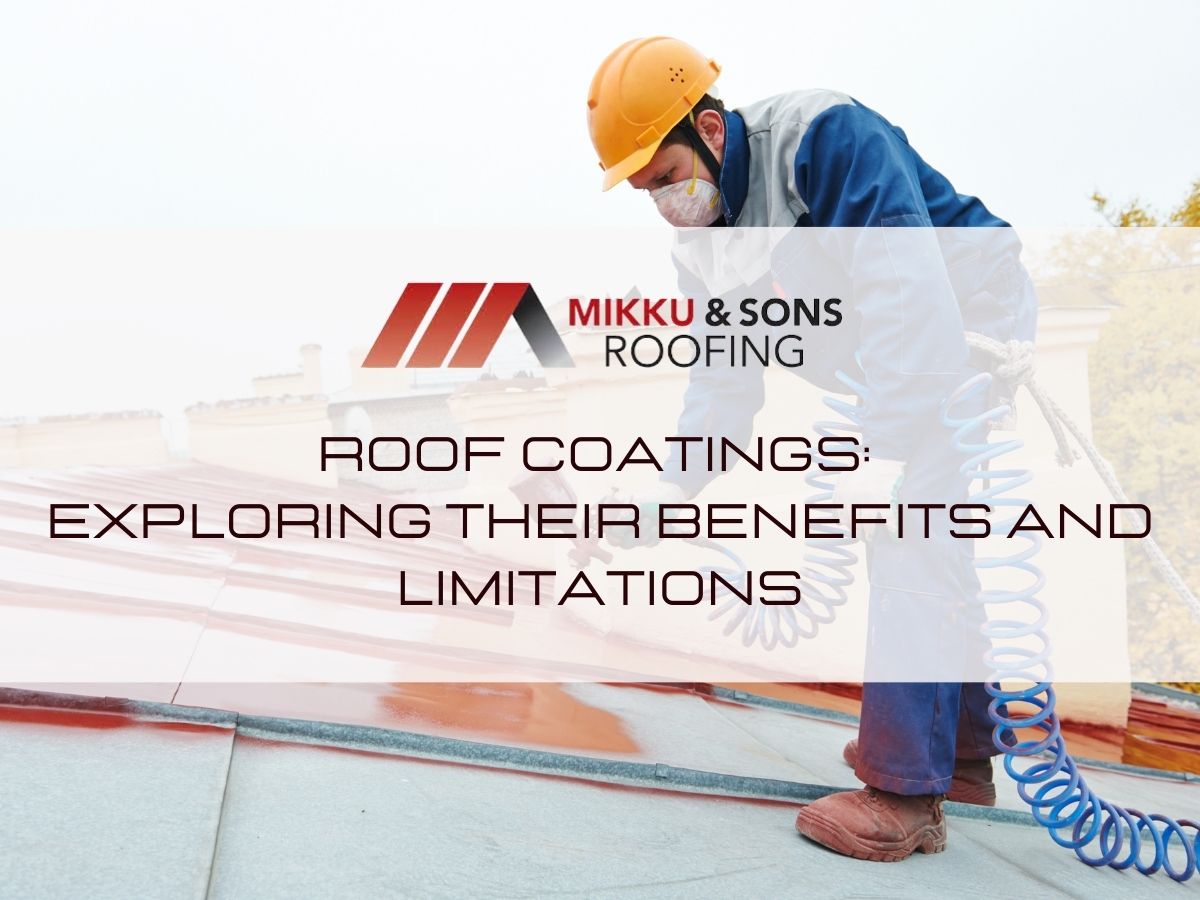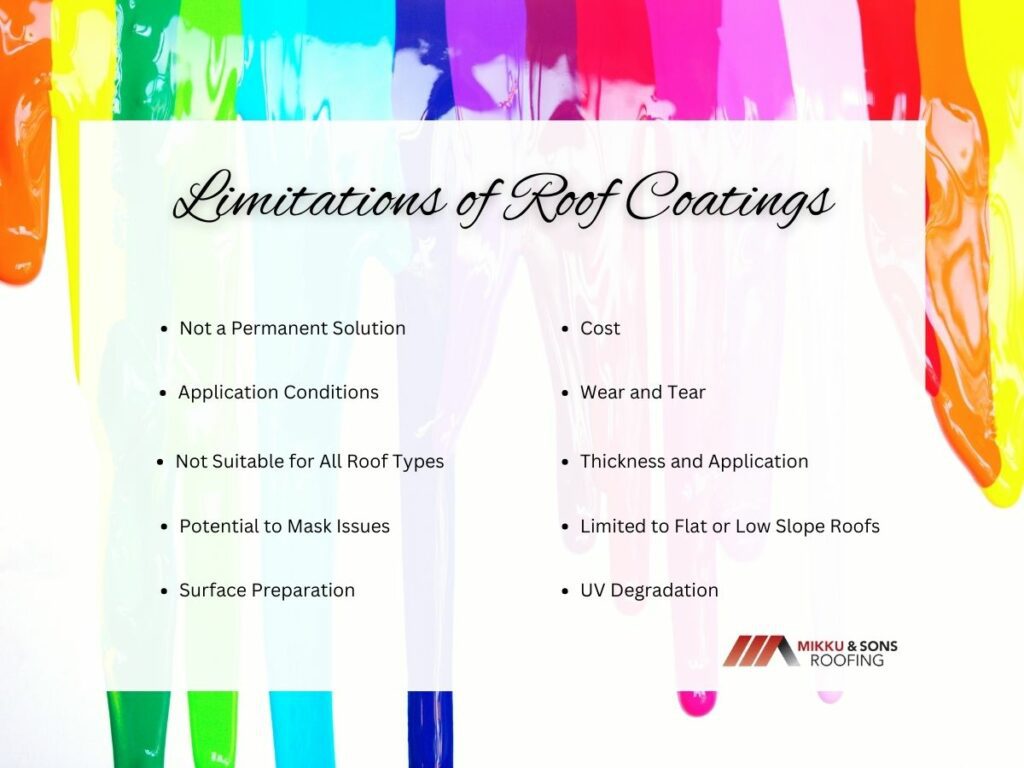

The roof of a structure, be it residential, commercial, or industrial, serves as the primary barrier against the elements. Over time, roofs undergo wear and tear due to constant exposure to sunlight, rain, wind, and other environmental factors.
Roof coatings have emerged as a popular solution for extending the life of existing roofs, providing additional protection, and offering energy-saving benefits. But like any solution, roof coatings come with both advantages and limitations.
Dive into this article as we unravel the myriad benefits of roof coatings and shed light on their limitations, ensuring you make an informed decision for your roofing needs.
Roof coatings are a protective layer applied to a roof to extend its life, enhance its performance, and prevent or repair minor damages. They are designed to protect roofs from the effects of weather, UV radiation, and other environmental factors.
Roof coatings can be applied to various types of roofing systems, including metal, asphalt, single-ply, and built-up roofs. Roof coatings are typically applied using rollers, brushes, or spray equipment. Before application, the roof should be thoroughly cleaned and any necessary repairs made.
Here are the most common types of roof coatings to consider:

When considering a roof coating, it's essential to consult with roofing professionals to determine the best product and application method for the specific roof and climate.
Roof coatings offer a multitude of benefits that extend beyond merely providing a fresh look. From sustainability to energy efficiency, here's a rundown of the notable advantages of using roof coatings:
One of the primary benefits of roof coatings is the extension of a roof's service life. The coating acts as a protective layer against various environmental factors, such as UV rays, reducing the underlying roof system's degradation rate.
Reflective roof coatings have the ability to reflect sunlight and absorb less heat. This means that buildings remain cooler, which can significantly reduce air-conditioning costs during hot months.
UV rays can harm many roofing materials, causing them to degrade faster. A roof coating can offer protection against these rays, ensuring the roof materials don't prematurely age or deteriorate.
In many cases, it's more cost-effective to apply a roof coating than to replace or extensively repair the roof. This can be especially true for minor damages or leaks.
Applying a roof coating can reduce the need for a full roof replacement, which, in turn, reduces the amount of waste material sent to landfills.
Some roof coatings offer improved resistance against rain, hail, wind, and temperature fluctuations. This can be particularly beneficial in areas prone to severe weather conditions.
Since roof coatings are fluid-applied, they can create a seamless layer over the roof, reducing the potential for leaks.
Over time, roofs can discolor, stain, or generally look worn out. A roof coating can refresh the appearance of a building, giving it a cleaner and more updated look.
By reflecting sunlight, certain roof coatings can decrease a roof's surface temperature, which helps reduce the urban heat island effect in populated areas.
Some roof coatings are elastomeric, meaning they have the capability to stretch and then return to their original shape. This can help accommodate a building's natural movements without causing damage or cracks in the coating.
When considering a roof coating, it's essential to select the right type based on the existing roofing material, local climate, and specific requirements of the building.
While roof coatings offer numerous benefits, they also have some limitations that one should be aware of before deciding on a roofing solution. Here's a summary of the potential drawbacks and limitations of roof coatings:

Roof coatings can extend the life of a roof, but they are not a forever solution. Over time, even coated roofs will require maintenance, and the coating itself may need reapplication.
Roof coatings need specific weather conditions for application. If the temperature is too cold or too hot, or if there's too much humidity, the coating might not adhere well or take longer to dry.
Some roof materials might not be compatible with certain coatings. Roofs with ponding water, for example, may not work well with some types of coatings.
A roof coating can sometimes mask deeper, underlying problems. Without a proper assessment, users might overlook significant structural or moisture issues that could become more severe over time.
For a roof coating to adhere properly and last, the existing roof needs to be thoroughly cleaned and prepped. This can be labor-intensive and sometimes requires professional intervention.
High-quality roof coatings and professional application can be expensive initially, even if they might save money in the long run.
While roof coatings are designed to be durable, they are not immune to wear and tear, especially in areas with severe weather conditions or high foot traffic.
Getting the right thickness during application is crucial for the coating's performance. Too thin might not provide adequate protection; too thick, and it could crack or not cure properly.
Many roof coatings are primarily designed for flat or low-slope roofs. They might not be as effective or suitable for steep-sloped roofs.
Over time, certain roof coatings, especially those not specifically designed for UV protection, can degrade due to prolonged exposure to UV rays.
When considering roof coatings, weighing both the benefits and limitations is essential. Consulting with roofing professionals can provide insight into whether a coating is the right solution for a specific building or structure.
Roof coatings offer an innovative solution for enhancing roof lifespan, energy efficiency, and aesthetics. While they present numerous advantages, they also come with inherent limitations, from application challenges to potential masking of deeper roofing issues.
As with any construction decision, evaluating the benefits and drawbacks is essential. Consulting with roofing professionals and understanding the specific needs of your building will guide you in making the most informed choice, ensuring longevity and optimum performance.
